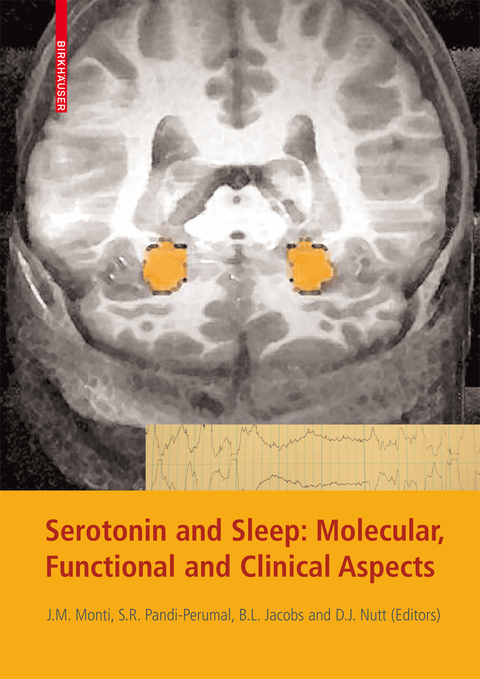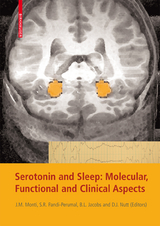Serotonin and Sleep: Molecular, Functional and Clinical Aspects
Springer Basel (Verlag)
978-3-7643-8560-6 (ISBN)
Evolution of concepts.- Changing concepts on the role of serotonin in the regulation of sleep and waking.- The dorsal raphe nucleus and median raphe nucleus: organization and projections.- Topographic organization and chemoarchitecture of the dorsal raphe nucleus and the median raphe nucleus.- Efferent and afferent connections of the dorsal and median raphe nuclei in the rat.- Reciprocal connections between the suprachiasmatic nucleus and the midbrain raphe nuclei: A putative role in the circadian control of behavioral states.- Serotonin receptors.- Localization of 5-HT receptors in the mammalian cortex.- Molecular biology of 5-HT receptors.- Electrophysiology of serotonergic neurons and the regulation of serotonin release.- Brain serotonergic neuronal activity in behaving cats.- Electrophysiological studies on serotonergic neurons and sleep.- Role and origin of the GABAergic innervation of dorsal raphe serotonergic neurons.- Regulation of serotonin release by inhibitory and excitatory amino acids.- Neurophysiological aspects of the regulation of serotonin neurons by the orexinergic system.- Serotonin receptors and the regulation of behavioural state.- Serotonin and dreaming.- Involvement of the 5-HT1A and the 5-HT1B receptor in the regulation of sleep and waking.- Mechanisms involved in the inhibition of REM sleep by serotonin.- Effect of 5-HT2A/2B/2C receptor agonists and antagonists on sleep and waking in laboratory animals and humans.- Effect of the selective activation of serotonin 5-HT3 receptors on sleep and waking.- 5-HT7 receptor modulation of sleep patterns.- Sleep and waking in mutant mice that do not express various proteins involved in serotonergic neurotransmission such as the serotonergic transporter, monoamine oxidase A, and 5-HT1A, 5-HT1B, 5-HT2A, 5-HT2C and 5-HT7 receptors.- Circadian control by serotonin and melatonin receptors: Clinical relevance.- Serotonergic mechanisms contributing to arousal and alerting.- Relevance of serotonin to clinical disorders and drug actions.- Contribution of chemosensitive serotonergic neurons to interactions between the sleep-wake cycle and respiratory control.- Obstructive sleep apnea: The potential for serotonergic pharmacotherapies.- The effects of antidepressant drugs and 5-HT1A agonists on human sleep.- The effect of typical and atypical antipsychotic drugs on sleep of schizophrenic patients.
| Erscheint lt. Verlag | 17.12.2007 |
|---|---|
| Zusatzinfo | XXVIII, 621 p. 80 illus., 3 illus. in color. |
| Verlagsort | Basel |
| Sprache | englisch |
| Maße | 165 x 235 mm |
| Gewicht | 1280 g |
| Themenwelt | Medizin / Pharmazie ► Medizinische Fachgebiete ► Pharmakologie / Pharmakotherapie |
| Medizin / Pharmazie ► Pharmazie | |
| Schlagworte | Arousal • Biology • brain • central nervous system • Cortex • Evolution • Hardcover, Softcover / Medizin/Pharmazie • HC/Medizin/Pharmazie • Molecular Biology • nervous system • neurons • Physiology • Protein • Psychopharmacology • receptor • Regulation • Serotonin • Sleep |
| ISBN-10 | 3-7643-8560-X / 376438560X |
| ISBN-13 | 978-3-7643-8560-6 / 9783764385606 |
| Zustand | Neuware |
| Informationen gemäß Produktsicherheitsverordnung (GPSR) | |
| Haben Sie eine Frage zum Produkt? |
aus dem Bereich




